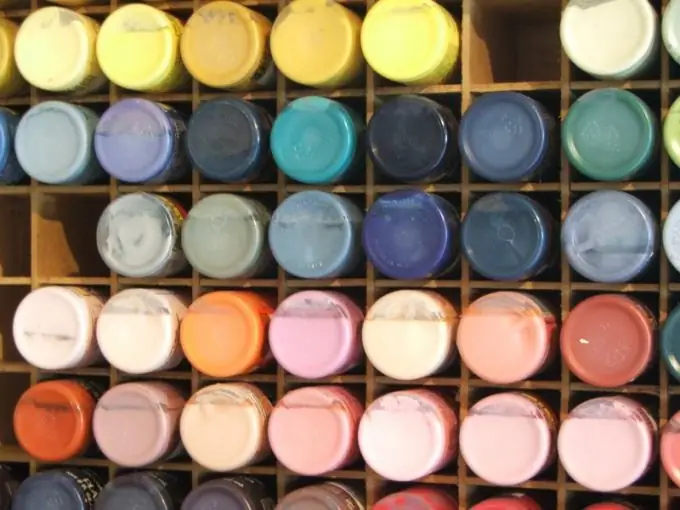There is an opinion among amateur artists that it is not good to imitate someone else's style. However, in professional educational institutions, for many centuries, future painters and draftsmen have been taught to copy the works of old masters, because this allows not only to master a great variety of artistic techniques, but also to develop their own style. It is better to learn to imitate someone else's style under the guidance of an experienced teacher, but you can try to master the basics yourself.

Learn the technology of painting
Pay attention to what materials the artist used, whose style you want to master. Try to get the materials you need. Many old masters made their own paints. A modern novice artist may not have such an opportunity. But in the store, choose the paint, canvas or paper that best suits your needs. It is not always easy, but if you wish, it is possible, since the assortment of goods for artists in specialized stores is quite large.
Consider the colors
Choose a painting that is most representative of the artist. For the first time, it is better to copy a work that is not particularly overloaded with details - if possible, of course, since saturation with small objects can also be a distinctive feature of the style. Examine the canvas carefully. Pay attention to the colors - are there many mixed ones among them, or the artist uses only pure natural tones, how chiaroscuro is transmitted (different shades of the same color or other colors), whether the painter likes light or he prefers dark shades. Try to define the color scheme as accurately as possible. For example, the Impressionists preferred pastel colors, primitivists prefer bright saturated shades, etc.
Determine the proportions
Estimate the proportions. Does the artist depict objects in their real proportions, or does he exaggerate something, and misses something altogether? Does he follow the laws of perspective? How do human figures look in the picture - are the faces visible, or the artist conveys only plasticity, whether separate parts of the figures are equally clearly drawn, or the artist emphasizes something and even exaggerates, and the rest of the body seems to be of no importance to him.
Pay attention to strokes and strokes
Regardless of what materials the artist prefers, try to simulate his style with a pencil on paper first. Let it be just a sketch, but try to convey the proportions of the picture as accurately as possible and emphasize the same details as the artist. Adjust the drawing until you get something close to the original. Then prepare the material preferred by the original author. It can be a primed canvas, gesso, velvet paper, just paper, etc. Transfer your sketch and try to paint the copy. Pay special attention to the strokes - their length and width, density and direction. Try to copy them as accurately as possible. After making a few copies, draw something in the artist's style yourself, observing all the style features that you already mastered when copying.






